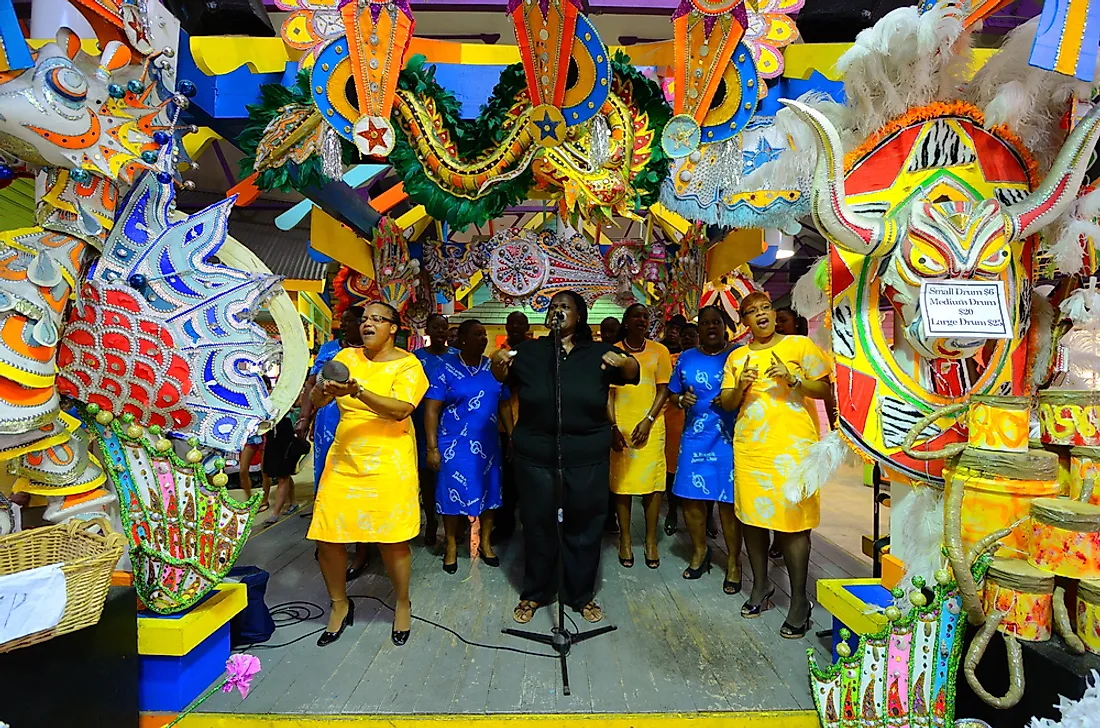What Is The Ethnic Composition Of The Bahamas?

The Bahamas is an island nation in the Caribbean, and it is made up of several islets, islands, and cay which are more than 700 in number. The country's population was estimated to be 389,482 people as of 2019. The largest city in the country which also serves as the capital city is Nassau having a population of about 255,000 inhabitants. Here are the largest ethnic groups in the Bahamas.
Afro-Bahamians (Black)
Afro-Bahamians are by far the largest ethnic community in the country, accounting for 90.6% of the total population in the country. The Afro-Bahamians trace their origins to Africa, particularly to parts of Western Africa who were enslaved and brought to the Bahamas. In the 17th century, the Africans were originally brought to Bermuda before they were taken to the Bahamas. Many others came directly from Africa during the 18th and the 19th century. Similarly, the loyalist from parts of South Carolina and Georgia migrated to the Bahamas, and they took with them many of the Africans slaves. In the 19th century, many Afro-Haitians also moved and settled in Southern part of the Bahamas. The 2010 census in the Bahamas indicated that about 92.7% of the population identified as African or an African mix with European.
White Bahamians
White Bahamians refer to the ethnic group in the Bahamas who trace their ancestry to Europe, mostly to Scotland and England. The population of the white Bahamians is estimated to be about 46,920, representing about 4.7% of the country's total population. The white ethnic group in the Bahamas is largely the descendants of the English Puritans who were fleeing religious persecution in England, as well as the American loyalist, who were escaping the American Revolution War; both groups arrived in the Bahamas in 1649 and 1783 respectively.
Greek Bahamians
The Greek Bahamians account for less than 1% of the population in the Bahamas, and they are Bahamian citizens who either have full or partly Greek heritage. Most of the members of this ethnic group are descendants of the Greek laborers who moved the Bahamas in the 1880s and were involved in the Sponging industry. The Greek immigrants were expert spongers mainly from the Aegean Islands, and they lead an impoverished life in their country. When they arrived in the Bahamas, they employed the local community, particularly the black laborers and used their connections to move up the economic and social ladder. They benefited significantly in the same way as other European immigrants who had advantages and opportunities over the native population. Other Greek immigrants were engaged in baking, restaurateurs, and shoemaking. When the sponge industry collapsed, the majority of the Greeks moved the restaurant and hospitality industry, and others join the furniture making, becoming the first furniture making in the island of the Bahamas.
Indigenous People to the Bahamas
The original inhabitants of the Bahamas who occupied the island before the arrival of the Europeans were the Lucayan people. They are believed to be part of the Tainos who occupied the larger part of the Caribbean islands during the time. The Lucayans were the original inhabitants of the Americas, and they are the people who Christopher Columbus met during his voyage. The Lucayans were captured as slaves by the Spaniards just a few years after Columbus arrived on the island and by 1520 they had all been removed from the Bahamas. The diarios of Christopher Columbus is the only source of firsthand information of the Lucayans. The currently available information about the culture and lives of the Lucayans has been as a result of the Archaeological discoveries and comparison with what is known about the culture of the Tainos in Hispaniola and Cuba. Archaeological information about Lucayanshave been distinguished from the Tainos of Hispaniola and Cuba regarding the size of their houses, the location and the organization of their villages, the material used in their pottery, and the resources used in their construction.











